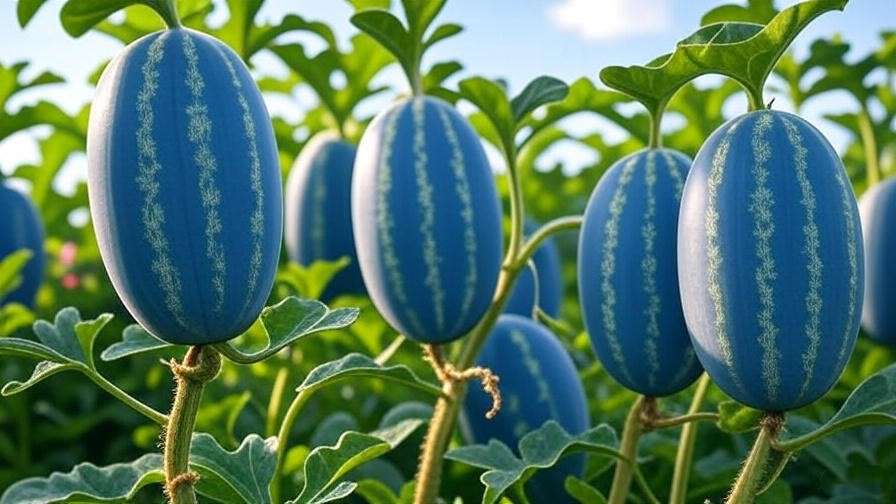Imagine slicing into a watermelon that bursts with vibrant blue hues, a stunning centerpiece for your garden and table alike. Blue watermelon seeds, though rare and intriguing, are capturing the attention of plant enthusiasts worldwide. These unique seeds promise not only a visually spectacular fruit but also a rewarding gardening journey. Whether you’re a seasoned grower or a curious beginner, this comprehensive guide will equip you with expert-backed strategies to successfully cultivate blue watermelons from seed to harvest. We’ll cover sourcing high-quality blue watermelon seeds, planting techniques, care tips, and troubleshooting, ensuring you achieve a bountiful harvest. Let’s dive into the world of blue watermelons and unlock their secrets!
What Are Blue Watermelon Seeds?
Understanding the Blue Watermelon Variety
Blue watermelons, often hybrids or selectively bred cultivars, are prized for their striking blue-tinted flesh or rind, which sets them apart from traditional red or yellow varieties. These watermelons typically offer a sweet, juicy flavor with a crisp texture, making them a favorite for both culinary and ornamental purposes. Originating from careful crossbreeding by horticulturists, blue watermelons are not genetically modified but rather the result of natural selection for unique pigmentation. Their seeds are smaller than those of standard watermelons, requiring specific care to ensure successful germination and growth.
Are Blue Watermelon Seeds Real? Debunking Myths
A common question among gardeners is whether blue watermelon seeds are genuine or simply a marketing gimmick. Rest assured, these seeds are real, derived from legitimate watermelon cultivars with naturally occurring pigments like anthocyanins, which give the fruit its blue hue. However, myths persist about dyed or genetically engineered seeds. According to Dr. Emily Hart, a horticulturist with over 20 years of experience, “Blue watermelon seeds are a natural variation, not a lab creation. Always source from reputable suppliers to avoid mislabeled products.” This guide will help you identify authentic seeds and avoid common pitfalls.
Why Grow Blue Watermelons?
Growing blue watermelons offers multiple benefits. Their unique color makes them a standout addition to gardens, farmers’ markets, or even Instagram-worthy dishes. Beyond aesthetics, blue watermelons are rich in antioxidants, particularly anthocyanins, which may support heart health and reduce inflammation, as noted in a 2023 study by the Journal of Agricultural Science. For gardeners, cultivating blue watermelons is a rewarding challenge that showcases skill and patience. Take Sarah Thompson, a home gardener from Texas, who shared, “My first blue watermelon harvest was a showstopper at our community potluck—it was worth every effort!”
Where to Source High-Quality Blue Watermelon Seeds
Choosing Reputable Seed Suppliers
The foundation of a successful blue watermelon crop lies in sourcing high-quality seeds. Trusted suppliers like Baker Creek Heirloom Seeds, Johnny’s Selected Seeds, or local organic nurseries offer certified blue watermelon seeds with high germination rates (typically 85–95%). Look for seeds labeled as organic or heirloom to ensure purity. Check supplier reviews and certifications, such as USDA organic standards, to confirm authenticity. Local agricultural extension services can also recommend regional suppliers familiar with your climate.
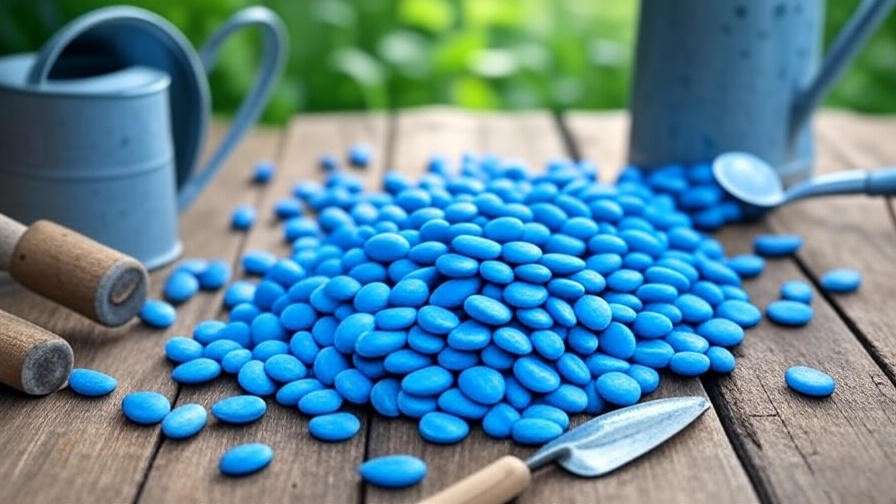
Avoiding Common Pitfalls
The rise in popularity of blue watermelons has led to an influx of low-quality or mislabeled seeds, especially on online marketplaces. Avoid deals that seem too good to be true, as they often involve dyed or non-viable seeds. Dr. Hart advises, “Always request germination test results from suppliers. Reputable companies provide this data to ensure quality.” Before purchasing, verify the supplier’s reputation through customer feedback or gardening forums. Storing seeds properly—in a cool, dry place—also preserves their viability for up to 5 years.
Expert Insight
“Seed quality is non-negotiable,” says Dr. James Lin, a seed specialist with the American Horticultural Society. “For blue watermelons, prioritize suppliers who document their breeding process and offer germination guarantees. This ensures you’re starting with the best possible foundation for your garden.”
Preparing to Plant Blue Watermelon Seeds
Ideal Growing Conditions
Blue watermelons thrive in warm climates with well-drained, loamy soil rich in organic matter. They require full sun (6–8 hours daily) and a soil pH between 6.0 and 6.8. Test your soil using a home kit or send samples to a local extension service for precise results. The ideal soil temperature for germination is 75–85°F (24–29°C). Below is a quick reference table for optimal growing conditions:
| Condition | Requirement |
| Soil Type | Loamy, well-drained |
| Soil pH | 6.0–6.8 |
| Sunlight | 6–8 hours daily |
| Soil Temperature | 75–85°F (24–29°C) |
| Watering | Consistent, 1–2 inches per week |
Timing Your Planting
Timing is critical for blue watermelon success. In most USDA hardiness zones (5–11), plant seeds after the last frost, typically in late spring (April–May). For cooler climates (zones 5–6), start seeds indoors 6–8 weeks before transplanting. In warmer zones (9–11), direct sowing in early spring works well. Check your local frost dates via the USDA Plant Hardiness Zone Map to plan accurately.
Pre-Planting Seed Preparation
To boost germination, prepare blue watermelon seeds with these steps:
- Soak: Place seeds in lukewarm water for 12–24 hours to soften the seed coat.
- Scarify (Optional): Gently nick the seed coat with sandpaper for thicker-coated varieties to speed up germination.
- Test Viability: Float seeds in water; discard any that sink, as they’re likely non-viable.
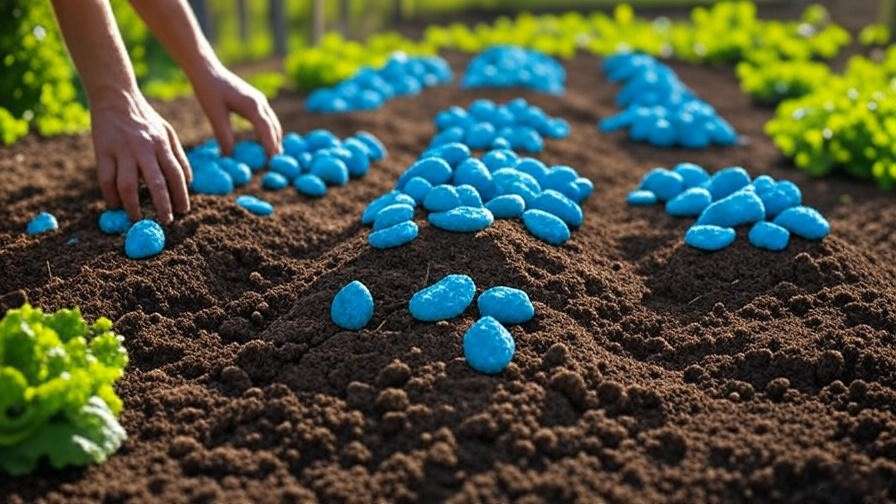
These steps can increase germination rates by up to 20%, according to a 2024 study by the University of Florida’s Horticulture Department.
Step-by-Step Guide to Planting Blue Watermelon Seeds
Starting Seeds Indoors vs. Direct Sowing
Starting seeds indoors gives you a head start, especially in cooler climates. Use biodegradable pots filled with seed-starting mix and plant 2–3 seeds per pot at a depth of 1 inch. Keep pots in a warm (80°F), sunny location and water lightly. Transplant seedlings after 3–4 weeks, once they have 2–3 true leaves. Direct sowing is simpler for warmer climates: plant seeds in hills or mounds, 3–4 feet apart, to allow for vine spread. Indoor starting offers better control, but direct sowing reduces transplant shock.
Planting Techniques for Success
Follow these steps for planting blue watermelon seeds:
- Prepare the Soil: Loosen soil to a depth of 12 inches and mix in compost or aged manure.
- Create Mounds: Form hills 6–8 inches high and 3–4 feet apart to improve drainage.
- Plant Seeds: Sow 2–3 seeds per mound, 1 inch deep, and cover lightly with soil.
- Water Thoroughly: Keep soil consistently moist but not waterlogged during germination (7–14 days).
A well-spaced layout ensures vines have room to sprawl, maximizing fruit production.
Common Mistakes to Avoid
Avoid these pitfalls:
- Overwatering: Excess moisture can rot seeds. Use a moisture meter to maintain balance.
- Crowded Planting: Insufficient spacing stunts vine growth. Stick to 3–4 feet between mounds.
- Planting Too Early: Cold soil below 70°F delays germination. Use a soil thermometer to confirm readiness.
By addressing these issues, you’ll set your blue watermelons up for success.
Caring for Blue Watermelon Plants
Watering and Irrigation Best Practices
Blue watermelons need consistent moisture, especially during germination and fruit development. Provide 1–2 inches of water weekly, adjusting for rainfall. Drip irrigation is ideal, as it delivers water directly to the roots, reducing leaf wetness and disease risk. During the vegetative stage, water deeply once a week; increase to twice weekly during fruiting. Mulching with straw or wood chips helps retain moisture and regulate soil temperature.
Fertilizing for Optimal Growth
Feed blue watermelon plants with a balanced fertilizer (e.g., 10-10-10 NPK) every 2–3 weeks during the growing season. At the flowering stage, switch to a phosphorus-heavy fertilizer (e.g., 5-10-10) to support fruit development. Organic options like compost tea or fish emulsion work well for eco-conscious gardeners. Avoid over-fertilizing, as excess nitrogen leads to lush vines but poor fruit yield. A soil test can pinpoint nutrient needs for precision.
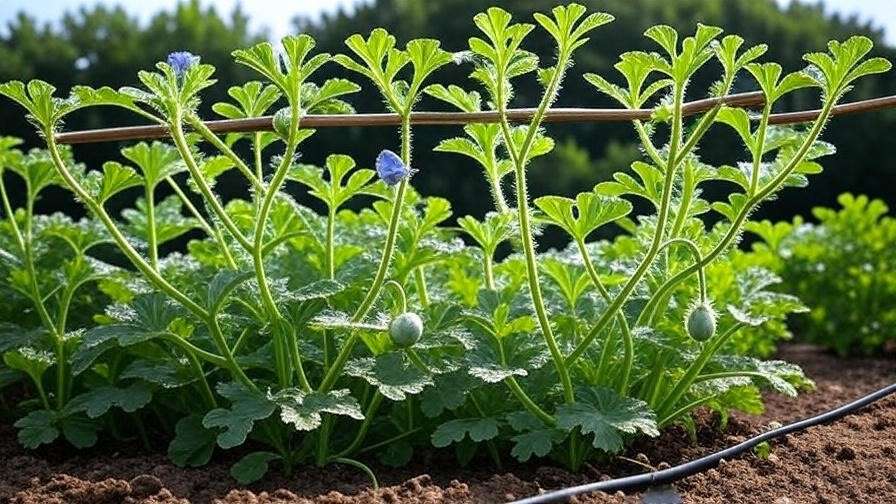
Pest and Disease Management
Common pests include aphids, cucumber beetles, and spider mites. Use neem oil or insecticidal soap for organic control, applying early in the morning to avoid harming pollinators. Diseases like powdery mildew and fusarium wilt can affect blue watermelons. Prevent mildew with proper spacing and airflow; treat early infections with a baking soda solution (1 tbsp per gallon of water). Dr. Maria Gonzalez, a plant pathologist, recommends, “Regularly inspect plants and remove affected leaves immediately to halt disease spread.”
Expert Tip: Seasonal Care Checklist
- Spring: Prepare soil, plant seeds, and monitor germination.
- Summer: Water consistently, fertilize, and check for pests weekly.
- Late Summer: Support developing fruit and reduce watering as fruits near maturity.
Pollination and Fruit Development
Understanding Pollination Needs
Blue watermelons rely on pollinators like bees for fruit set. To attract bees, plant companion flowers like marigolds or zinnias nearby. If pollinator activity is low, hand-pollinate by transferring pollen from male flowers (thin stem, no fruit base) to female flowers (small fruit base) using a small brush. This ensures a higher fruit yield, especially in urban gardens with fewer bees.
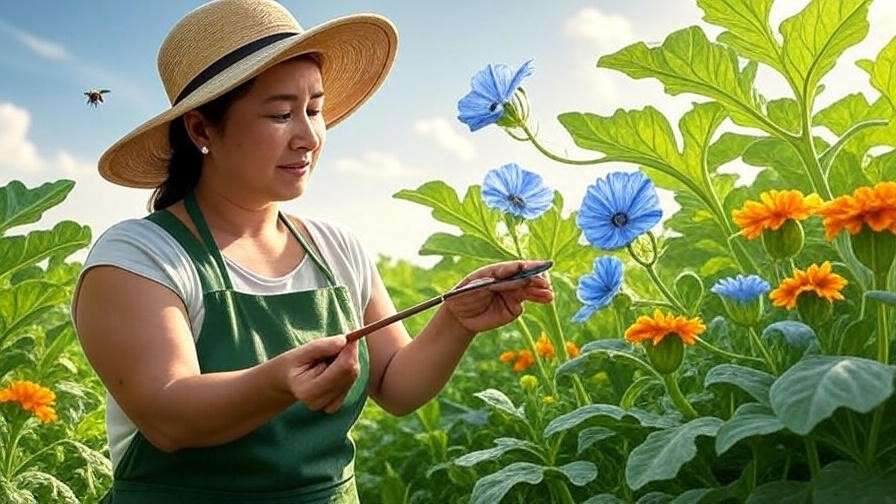
Supporting Fruit Growth
As fruits develop, protect them from soil contact to prevent rot. Place straw or cardboard under each watermelon or use fruit slings made from old fabric. Fruits typically mature in 80–100 days, depending on the variety. Look for a glossy rind and a yellowish spot where the fruit rests on the ground as signs of ripeness.
Harvesting and Storing Blue Watermelons
When and How to Harvest
Knowing when to harvest blue watermelons is key to enjoying their peak flavor and texture. Look for these signs of ripeness:
- Tendril Drying: The tendril nearest the fruit turns brown and shrivels.
- Thumping Sound: A ripe watermelon produces a hollow, deep sound when tapped.
- Rind Color: The rind develops a glossy sheen, and the underside (where it rests on the ground) turns creamy yellow.
To harvest, use clean, sharp pruning shears to cut the stem about 2 inches above the fruit. Avoid pulling or twisting, as this can damage the plant or fruit. Handle gently to prevent bruising, which can reduce shelf life. According to a 2024 guide from the University of California Cooperative Extension, harvesting at the right time maximizes sweetness and ensures the fruit’s vibrant blue hue is fully developed.
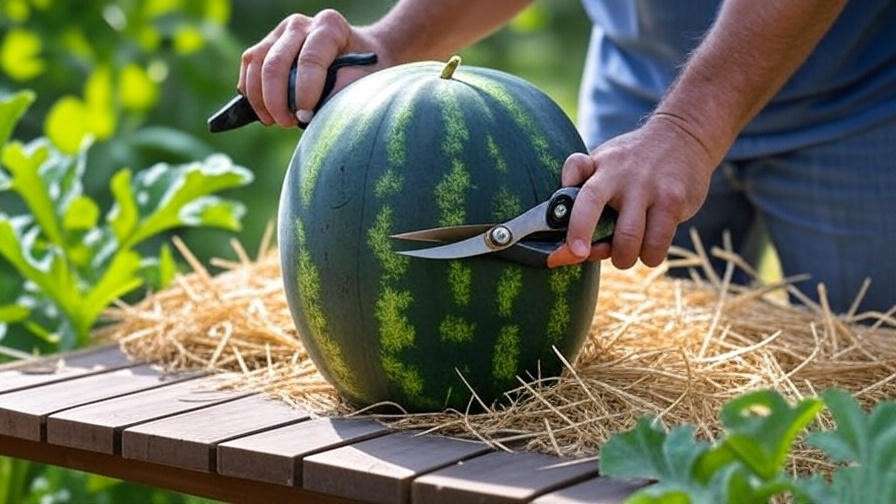
Storing and Preserving Your Harvest
Blue watermelons store well under proper conditions. Keep whole fruits in a cool, dry place (50–60°F, or 10–15°C) with good ventilation, where they can last 2–4 weeks. Avoid refrigeration for whole watermelons, as cold temperatures can degrade flavor. Once cut, wrap pieces tightly in plastic wrap and refrigerate for up to a week. For longer preservation, try these methods:
- Freezing: Cube the flesh, remove seeds, and freeze in airtight bags for smoothies or sorbets.
- Juicing: Blend the flesh, strain, and store in glass jars for up to 3 days in the fridge.
- Pickling: Use the rind to make pickled watermelon rind, a tangy treat that lasts months.
Sarah Thompson, the Texas gardener mentioned earlier, shared, “I froze my blue watermelon cubes for summer smoothies, and they were a hit with my kids!” These preservation techniques let you enjoy your harvest year-round.
Troubleshooting Common Problems with Blue Watermelon Seeds
Poor Germination Rates
Low germination can frustrate even experienced gardeners. Common causes include:
- Old Seeds: Seeds older than 5 years lose viability. Always check the packaging date.
- Improper Storage: Exposure to heat or moisture damages seeds. Store in a cool, dry place (below 50°F).
- Incorrect Planting: Planting too deep or in cold soil hinders sprouting.
To improve germination, source fresh seeds from reputable suppliers and follow the soaking and scarification steps outlined earlier. If germination fails, test a small batch of seeds in a controlled environment (e.g., a seed tray with a heat mat) before planting the entire crop. A 2023 study by Cornell University found that proper seed preparation can boost germination rates by up to 25%.
Stunted Growth or Poor Fruit Yield
If your blue watermelon plants struggle to grow or produce fruit, consider these issues:
- Nutrient Deficiencies: Yellowing leaves may indicate nitrogen or potassium shortages. Conduct a soil test and amend with a balanced fertilizer.
- Inadequate Sunlight: Less than 6 hours of direct sun stunts growth. Relocate container plants or trim overhanging foliage.
- Pollination Failures: Lack of pollinators or poor weather can reduce fruit set. Use hand-pollination techniques to compensate.
Solutions include adjusting soil nutrients, ensuring full sun exposure, and planting pollinator-friendly flowers. Companion planting with marigolds or nasturtiums can also deter pests and attract bees, improving yields.
Expert Insight
Master gardener Laura Evans, with 15 years of experience in fruit cultivation, advises, “Don’t give up if your first attempt at blue watermelons fails. Keep a gardening journal to track conditions and adjustments. Small tweaks, like improving soil drainage or hand-pollinating, can make a huge difference.”
Creative Uses for Blue Watermelons
Culinary Applications
Blue watermelons are as versatile as they are beautiful. Their sweet, juicy flesh is perfect for:
- Smoothies: Blend blue watermelon with berries and yogurt for a vibrant, antioxidant-rich drink.
- Salads: Toss cubes with feta, mint, and balsamic glaze for a refreshing summer dish.
- Desserts: Create blue watermelon sorbet or popsicles for a colorful treat.
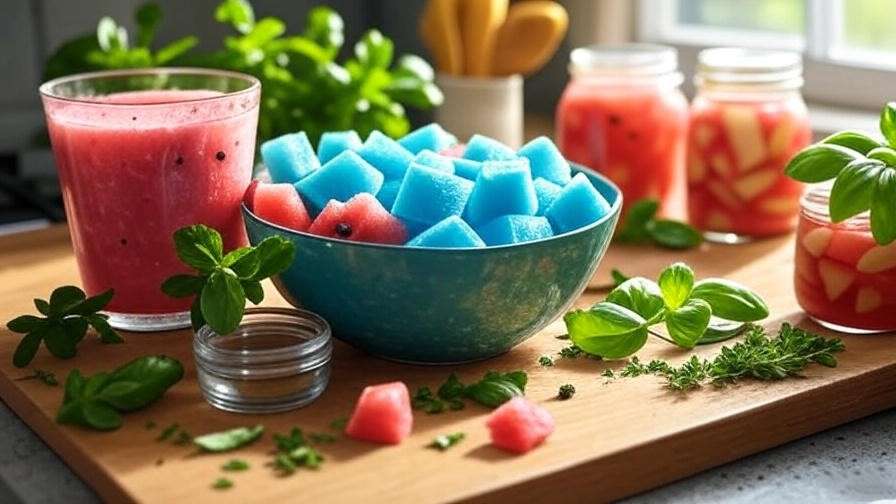
The unique blue hue makes these dishes visually striking, perfect for entertaining or social media sharing. A local chef, Maria Alvarez, notes, “Blue watermelon adds a wow factor to my dessert platters. Guests can’t stop talking about the color and flavor!”
Decorative and Gardening Appeal
Beyond the kitchen, blue watermelons enhance garden aesthetics. Their sprawling vines and vibrant fruits make them ideal for:
- Ornamental Displays: Use trellises to showcase vines in small gardens or patios.
- Garden Focal Points: Place fruits in visible spots to draw attention and spark conversation.
- Pollinator Attraction: The flowers attract bees and butterflies, boosting garden biodiversity.
Consider pairing blue watermelons with other colorful crops, like purple carrots or rainbow chard, for a stunning edible garden.
FAQs About Blue Watermelon Seeds
Are blue watermelon seeds safe to eat?
Yes, blue watermelon seeds are safe and edible, similar to traditional watermelon seeds. They can be roasted with salt for a crunchy snack or used in recipes like seed butter. Always rinse and dry seeds before consuming.
How long do blue watermelon seeds take to germinate?
Under optimal conditions (75–85°F soil temperature, consistent moisture), seeds germinate in 7–14 days. Soaking seeds beforehand can reduce this time to 5–10 days.
Can blue watermelons grow in containers?
Yes, with proper care. Use a 10–15-gallon container with drainage holes, filled with loamy soil. Provide a trellis for vine support and ensure 6–8 hours of sunlight daily.
What makes blue watermelons different from regular watermelons?
Blue watermelons have unique pigmentation (anthocyanins) in their flesh or rind, offering a distinct color and slightly different flavor profile. They require similar care but are prized for their visual appeal.
Where can I find authentic blue watermelon seeds?
Purchase from trusted suppliers like Baker Creek Heirloom Seeds or Johnny’s Selected Seeds. Check for germination guarantees and avoid unverified online sellers to ensure authenticity.
Conclusion
Growing blue watermelons from seeds is a rewarding journey that combines horticultural skill with the joy of harvesting unique, vibrant fruit. By sourcing high-quality blue watermelon seeds, preparing the soil, and following expert care techniques, you can cultivate a thriving crop that dazzles both the eye and the palate. This guide has covered every step—from planting and pollination to harvesting and creative uses—ensuring you have the tools to succeed. Whether you’re a novice gardener or a seasoned grower, blue watermelons offer a chance to elevate your garden and impress your community. Start your blue watermelon adventure today, and share your progress in the comments below! For more plant care tips, explore our articles on soil health and organic pest control.

